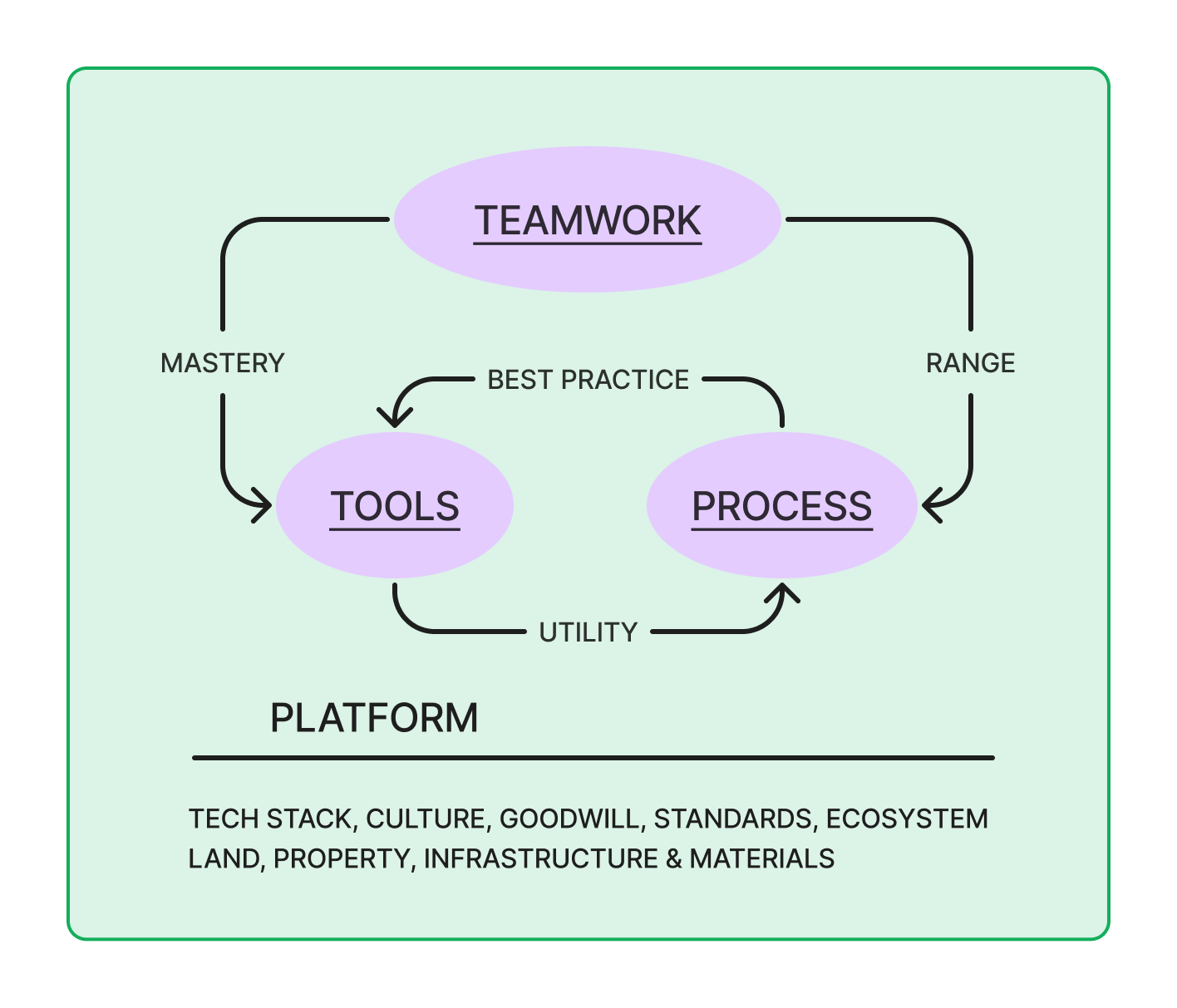Consulting Business Model
Engineers solve problems, consultants sell their services.
Identify the most important problems to solve, care about solving them.
Context
Providers
Playbook
Business Consulting Playbook

- Problem-Solving:
- Define the Problem: Always start by clearly defining the problem. Dig deeper to understand the root cause rather than just addressing symptoms.
- Hypothesis-Driven Approach: Develop an initial hypothesis (IH) and test it with data. This approach ensures that solutions are based on facts rather than assumptions.
- Issue Trees: Use issue trees to break down problems into smaller, manageable parts. This helps in structuring the analysis and ensuring that all aspects are covered.
- MECE Principle: Ensure that your analysis is Mutually Exclusive and Collectively Exhaustive (MECE) to avoid overlap and ensure completeness.
- Data and Facts:
- Fact-Based Decision Making: Always rely on data and facts to support your hypotheses and recommendations. This builds credibility and ensures that solutions are grounded in reality.
- Avoid Boiling the Ocean: Focus on the most critical data and avoid trying to analyze everything. Prioritize the most impactful areas to save time and resources.
- Client Engagement:
- Pre-Wiring: Before presenting findings to the client, engage in pre-wiring by discussing preliminary findings with key stakeholders. This helps in aligning expectations and reducing surprises during the final presentation.
- Challenge the Client: Don't take the client's problem statement at face value. Ask questions, dig deeper, and challenge their assumptions to uncover the real issues.
- Communication:
- Clarity and Brevity: Communicate findings and recommendations clearly and concisely. Avoid overwhelming clients with too much information; instead, focus on the most critical points.
- Elevator Test: Be able to explain your solution or recommendation in 30 seconds. This ensures that you understand the problem and solution well enough to communicate it succinctly.
- Team Collaboration:
- Leverage Team Strengths: Collaborate with team members to develop stronger hypotheses and solutions. Diverse perspectives often lead to better outcomes.
- Delegate and Specialize: Focus on areas where you can add the most value and delegate other tasks. Specialization can be a significant advantage for smaller firms.
Checklists
Problem-Solving
- Define the Problem:
- Clearly articulate the problem statement.
- Validate the problem with data and client input.
- Develop Hypotheses:
- Formulate initial hypotheses based on available data.
- Test hypotheses with additional data and analysis.
- Structure the Problem:
- Break down the problem using issue trees.
- Ensure the analysis is MECE.
- Analyze Data:
- Collect relevant data to test hypotheses.
- Focus on the most impactful data points.
- Propose Solutions:
- Develop solutions targeting the root causes.
- Validate solutions with data and client feedback.
Client Engagement
- Pre-Wiring:
- Discuss preliminary findings with key stakeholders.
- Align expectations and gather feedback.
- Challenge Assumptions:
- Ask probing questions to understand the real issues.
- Validate client assumptions with data.
- Communicate Clearly:
- Present findings and recommendations concisely.
- Use the elevator test to ensure clarity.
- Follow-Up:
- Schedule follow-up meetings to discuss implementation.
- Provide ongoing support and gather feedback.
Team Collaboration
- Leverage Strengths:
- Identify team members' strengths and assign tasks accordingly.
- Encourage diverse perspectives and collaboration.
- Delegate Tasks:
- Focus on high-value activities.
- Delegate lower-value tasks to appropriate team members.
- Specialize:
- Develop expertise in specific areas to differentiate from competitors.
- Continuously build and refine specialized skills.
Growth Strategy
Understand customer needs, build relationships, and continuously adapt your approach to business development and marketing.
- Focus on customer problems first: Prioritize understanding and solving real customer problems rather than pushing technology solutions without a clear need.
- Provide free value: Offering valuable content or insights for free, like through podcasts or speaking engagements, can generate buzz and lead to business opportunities.
- Leverage partner networks: Building relationships with larger organizations or platforms can create opportunities, but it takes time to develop trust and prove yourself.
- Be strategic about speaking engagements: Choose conferences and events where your target audience is present to maximize the impact of your presentations.
- Consider paid discovery offers: Offering tiered packages for initial assessments can help qualify leads and demonstrate value before larger engagements.
- Qualify leads early: Ask about timing, budget, and decision-making authority upfront to avoid wasting time on prospects that aren't ready to move forward.
- Differentiate through execution: In fields with a lot of hype, like AI, demonstrating the ability to build and implement solutions can set you apart from competitors.
- Balance focus and flexibility: While focusing on a specific niche can be beneficial, it's challenging to execute and may require finding a middle ground.
- Invest in prospecting: Make time for activities that help you connect with your ideal customer profile, even as your business grows.
- Get out and meet people: Organizing or attending in-person events, even informal ones like happy hours, can lead to valuable connections and business opportunities.
- Consider "event hijacking": Timing your own events around larger industry conferences can be a cost-effective way to connect with potential clients.
- Be open to learning opportunities: When partnering with larger organizations, consider the value of learning about new markets or processes, even if it means being flexible on pricing.